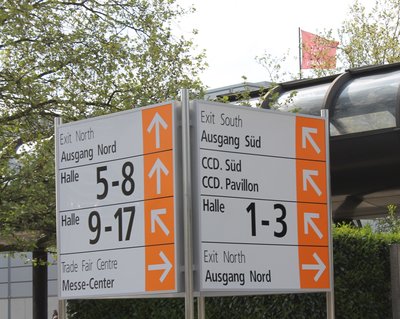Which way for drupa and packaging print?
With the commercial sector struggling to position itself within a cross media environment, an ever-expanding packaging market could be the print industry’s salvation – but there’ll be both winners and losers in the process, reports Des King.
There was absolutely no doubt about the main, if not indeed the only talking point, at drupa. The foretaste of a new printing technology that its originator, with characteristic lack of understatement, describes as nothing less than ‘game changing’.
We covered what nanography is in last month’s issue – we’ll come to what it may presage in due course. There was, meanwhile, evidence of other significant winds of change blowing through the exhibition halls, albeit presenting itself less flamboyantly than anything that a showman of Benny Landa’s magnitude might come up with.
Whilst reports of the death of commercial print are greatly exaggerated, there were indications that it could be edging that way, not least via the focus placed upon packaging print applications, registering quite a change of pace compared to the sector’s hitherto second-fiddle status at previous events.
‘In 100 years from now, there’ll be no more printed matter for communication,’ predicts Heidelberg board member with responsibility for equipment, Stephan Plenz. If anything, the Big H is playing it safe, the reality is likely to be a lot sooner than that. In the meantime, some commercial applications are bound to be jettisoned as the industry heads for higher, safer ground. ‘People want to move away from commoditisation, they want to create value and we’ve seen a pretty big shift in the product portfolio of our customers: more photobooks, more packaging and so forth,’ noted HP Indigo CEO, Alon Bar-Shany.
It is too simplistic to assess drupasolely on the basis of its attendance figures. This year’s 20% dip in visitor numbers is as much a reflection of the current health of the global economy as an indication of the extent to which printed media is slipping down the marketing agenda.
Whilst the show has always been a natural draw for the commercial print sector, converters and packaging printers have been harder to attract, favouring instead more easily accessible niche events such as Labelexpo and Fespa. Assuming the industry’s focus is re-aligned towards packaging print, however, those allegiances will alter.
In the meantime, not all commercial printers will passively watch their business head south, observed Mr Bar-Shany. ‘We have customers that are taking digital alongside offset and have disrupted the value chain, and are servicing the largest brands in the world. A lot of existing commercial printing customers are already producing folding cartons. These distinctions between commercial and labels and packaging and so forth are blurry to a large extent.’
Change of delivery
Irrespective of whether Benny Landa with his nanography proves to be the print industry’s saviour or else the devil in disguise as some have suspected all along, what is undeniably striking is the non-critical way in which the technology – or the potential it promises – has been received by the conventional equipment establishment. The alacrity with which the likes of Heidelberg, Komori and manroland confirmed partnering agreements with Landa is in stark contrast to the old guard’s dismissive attitude towards those early Indigo presses almost 20 years ago.
What the offset press manufacturers possibly see as a lifebelt may ironically represent a threat to the industry’s current digital press suppliers - the sector that may have most cause for concern should their technology become outmoded by a fleet of prototype for flexible packaging ranging from 520 mm to 1040 mm, and printing double-sided at an estimated speed of 200 m/min in up to eight colours at 1200 dpi.
Clearly, at this stage in its development, the jury is out on whether nanography truly is the technology of tomorrow – the best of both worlds ‘digital offset’ that it is being talked up to be. The way in which it is being presented, however, is bang in tune with the times. ‘A device that looks like an iPad is more appealing to a consumer-facing mindset than a lump of heavy metal,’ said Landa W5 press early adopter Reflex Labels’ Will Parker.
‘It’s a little bit ahead of its time, and it’s where we’re going to go. It’s a good proposition and I’m going to have no problem in finding people to work with it, as opposed to say those great big Mark Andy presses, which are mechanical and all that that implies, whereas you can see this system as being totally different. We’re blown away by the technology of it and how it interacts. It’s a level beyond the existing market offering.’
Meanwhile, flexo is coming under renewed pressure from its more well established competition. In striving to raise quality standards closer to that of gravure, the real cost of running a flexo production line is also fast approaching parity. Gravure has likewise made critical steps forward in shedding its exclusively long run image, with Cerutti, for example, having at least halved cylinder changeover time down to 13 minutes on average, and reporting some customers running as many as 10 different jobs per shift.
There is evidence too of conventional offset targeting the flexible packaging sector. KBA’s new Varius 80 modular, variable-format 800 mm width web offset waterless press comes complete with keyless inking units and a UV dryer – a combination that delivers an excellent print quality on flexible, non-absorbent substrates with a minimum of start-up waste. Not only are the offset plates used in the press much cheaper than the sleeves required for a flexo press, but along with the blanket they can be auto-changed to facilitate switching to a new job in less than six minutes.
‘Packaging machinery outperforms commercial by 10%,’ noted Mr Plenz. ‘Even allowing for the volume of consumables and services that are far bigger on the commercial side, the packaging sector represents between 20% and 25% of total Heidelberg sales terms. Five years ago that would have been nearer to 15%.
‘Packaging print is worth around €100 billion per year, so is Heidelberg’s 25% a good number? I think it’ll grow further via the new solutions we’re offering right now: the new XL 106, which will become the benchmark system and the expanding CX series, which enables companies – particularly those in emerging economies – to ramp up their productivity to the next level using the technology from the XL.’
Change of specification
Whether it is for a commercial or a packaging application, the process of generating a piece of print is morphing from a mastery of engineering functionality to an understanding of how best to fulfil a marketing imperative. And as that print can be output from devices that, size apart, wouldn’t look out of place in any loft or office, why shouldn’t its point of production shift within the supply chain – and if so, then why not its point of specification also?
There is already some evidence of commercial print management companies extending their remit to take in packaging as well – for example, Williams Lea on behalf of Elizabeth Arden two or three years ago, and more recently the strategic addition of a packaging management service made by HH Global in January.
‘The print management model was always going to evolve rapidly, particularly for those operators trading purely on cost reduction and sharing the savings over a fixed term contract,’ said packaging industry specialist corporate finance firm Moorgate Capital’s Nick Mockett. ‘More successful were the companies that added value and provided additional services, and above all took away the headache from their customers – for example, a lot of products require several different items of packaging not necessarily produced by the same manufacturer viz. toothpaste will require a tube, a closure and a carton.
‘Packaging is right there at the head of the marketing agenda, and yet too many companies that make it still see it as an engineered product rather than a marketer’s solution. If so, then that’s a missed opportunity for packaging manufacturers in failing to provide some degree of service on top of the product that helps them to get under the skin of the customer – and thus becoming vulnerable to margin squeeze to some extent should packaging management really gain a foothold.
‘Commercial printers used to think that customers would never go to print managers because there was no equipment to see. But actually people don’t want to see a shiny bit of metal, they just want to get what they’ve ordered, correctly produced, on time and at the agreed cost – so never mind the engineering, it’s the business proposition that counts.’
And with competing technologies increasingly able to replicate one another in a rapidly changing packaging print space, never mind the process either?
Change of frequency
Whilst the focus of attention is certain to have swung more towards packaging print by the next drupa, what is less straightforward to predict is its size. Possibly its duration, and who knows, maybe even its timing. Regardless of what it outputs, the physical properties of printing equipment are being steadily digitised and incorporated within a smaller footprint – thereby requiring less exhibit space, less build-up and break-down required to assemble the equipment, and less time needed for its display.
Frequency of the event itself has always been a moveable feast, said Messe Dϋsseldorf’s drupashow director Manuel Matare. ‘It hasn’t always been on this cycle. In the past it’s been staged on both a three and a five-yearly basis. So maybe we’re going to see a different cycle again, which possibly could be positive for the industry. Having interpack, drupa and the K in successive years, because there are some companies that are all three.
‘We’ve always had packaging at drupa, and there are some that would like to see it as a dedicated sector. That would be rather difficult to achieve because of tradition. Two or three companies are already asking if we’re going to ask them to move next time as they don’t want to, not least because they invariably cover commercial print as well.’
Meanwhile, as well as regulars like Esko and W&H, more and more drupa stalwarts are now eyeing up interpack, confirms Mr Mattare. For example, HP Indigo’s ‘digital supermarket’ at last year’s show and Heidelberg via its Linoprint operation.






